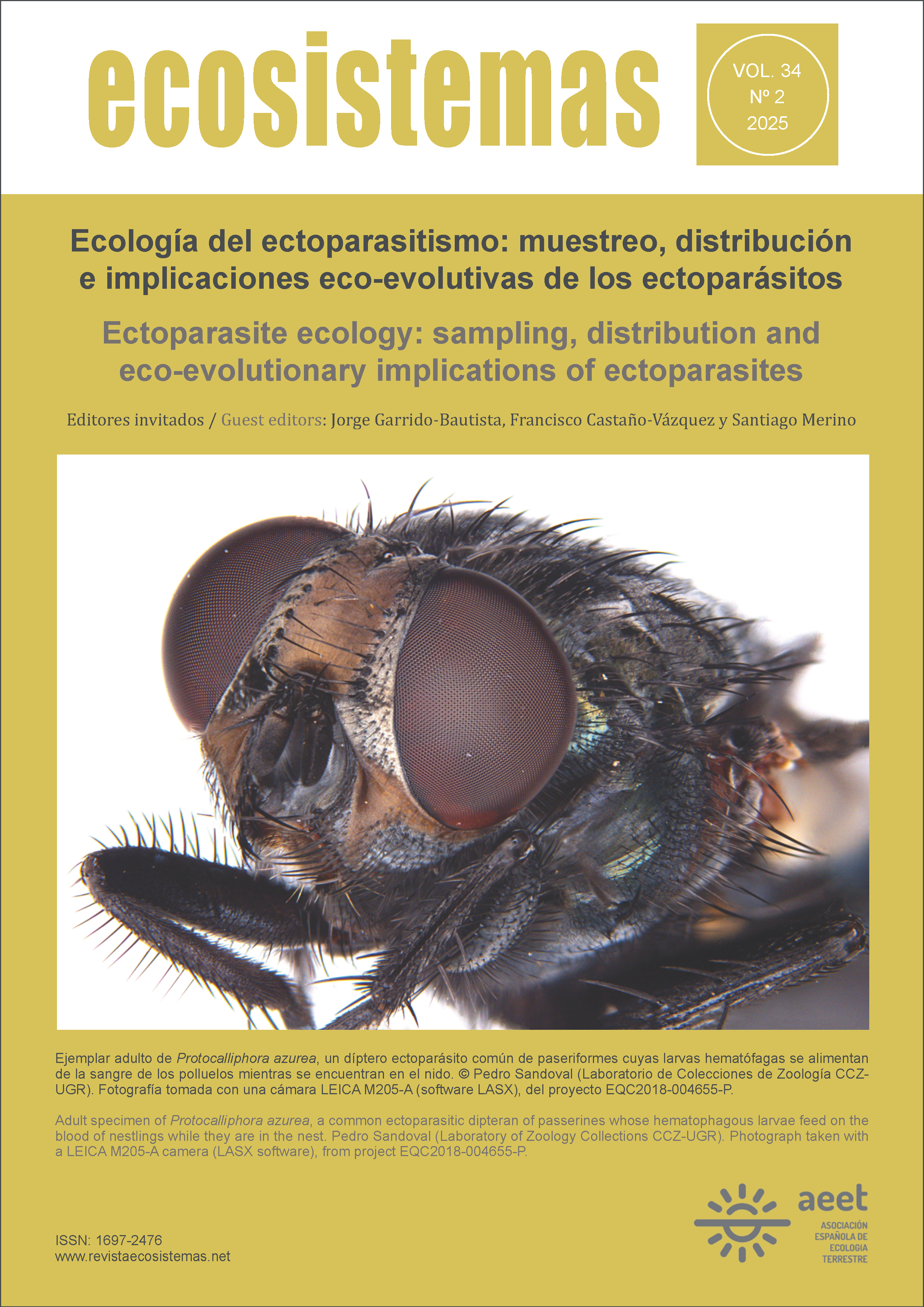Geographic variation in tick parasitism and impact on immune physiology of the lizard Psammodromus algirus across its distribution range
Main Article Content
Abstract
Haematophagous ectoparasites draw resources from their hosts, reducing host body condition and altering haematology and immune physiology. The tick Ixodes ricinus is a hard tick whose immature stages can infest the lizard host Psammodromus algirus along its geographic distribution. However, few studies have examined the associations between tick infestation and lizard immune physiology and susceptibility to other infections. In this study, we analysed the geographic variation in tick ectoparasitism in P. algirus across 17 sites in the Iberian Peninsula and North-western Africa. We also examined the relationship between tick pressure, immune physiology, and haemoglobin concentration in these lizards. In addition, we tested whether P. algirus hosts infested by ticks were more often infected with blood parasites. All ticks found on P. algirus from the Iberian Peninsula belonged to the I. ricinus species, while the genera Hyalomma and Haemaphysalis were found only on P. algirus from Morocco. Tick prevalence and infestation intensity varied widely among geographic locations. All lizards from a single sampling site in central Spain were infested and harboured the highest tick loads, but no lizards from southern Spain were infested. Intermediate values of infestation were found in Portugal and Morocco. Infested adults harboured more ticks than infested juveniles. The presence and number of ticks were not correlated with the lizards’ leucocyte counts nor with the heterophil-to-lymphocyte ratio, but infested males had a lower H/L ratio than infested females. No significant relationship was found between tick infestation and the presence of blood parasites. We also tested the inter-individual variation in haemoglobin concentration of lizards in a single site, and it was not explained by tick load. Our results show that tick ectoparasitism in P. algirus hosts drastically varies across geography, but it did not correlate with the lizards’ immune histology, haematic physiology, or status of infection by blood parasites.
Downloads
Article Details

This work is licensed under a Creative Commons Attribution-NonCommercial 4.0 International License.
Accepted 2025-06-11
Published 2025-07-23

